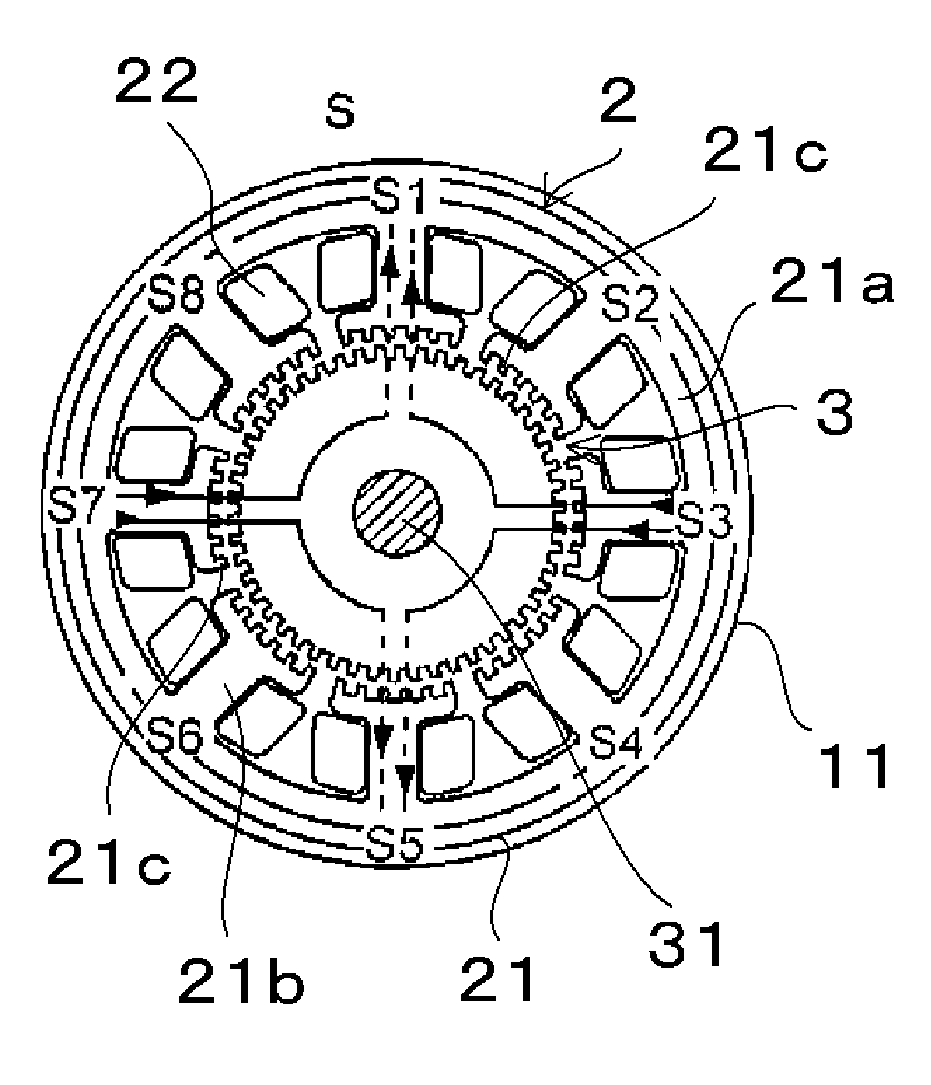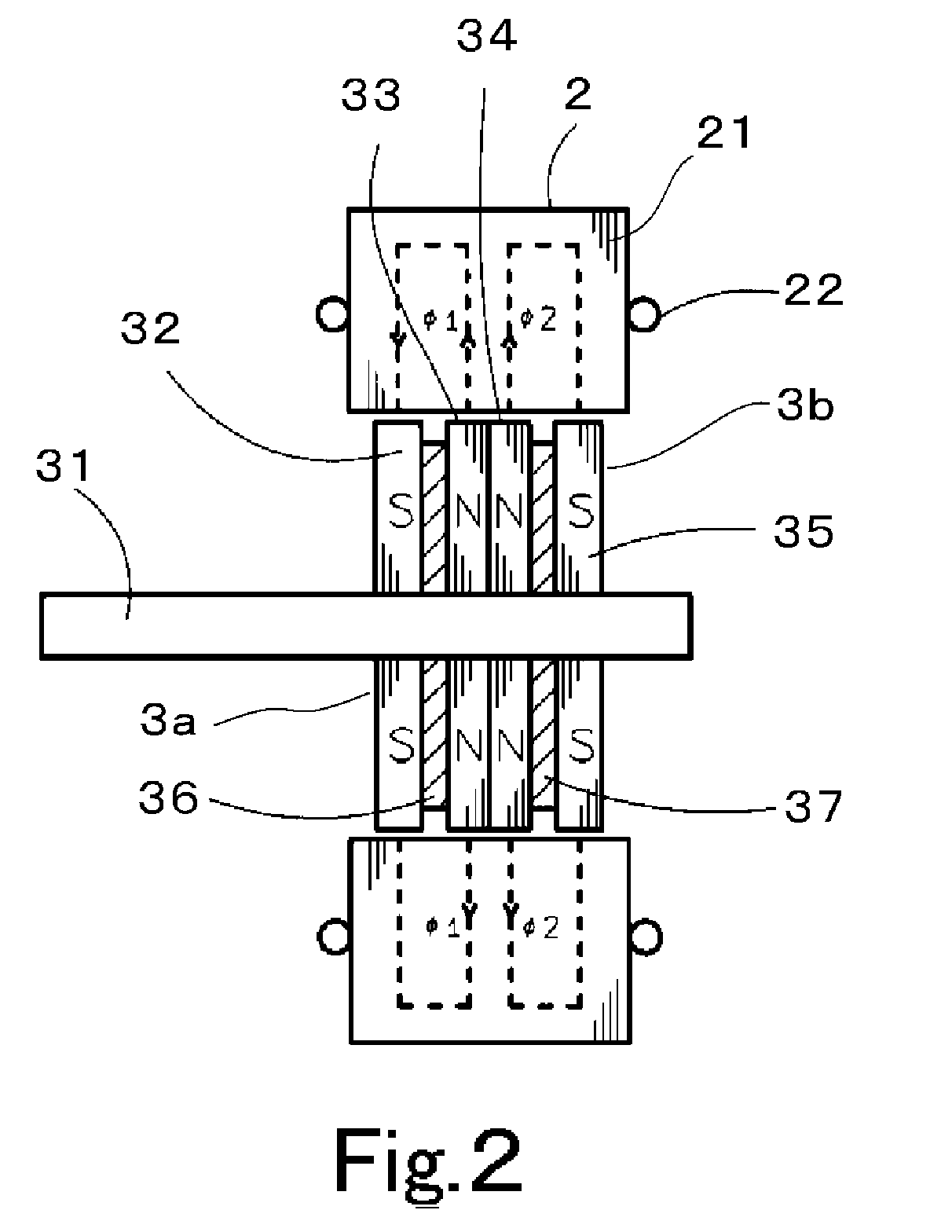Permanent-magnet rotary electric machine
- Summary
- Abstract
- Description
- Claims
- Application Information
AI Technical Summary
Benefits of technology
Problems solved by technology
Method used
Image
Examples
first preferred embodiment
[0027]FIGS. 1A, 1B and 1C show a rotary electric machine according to a first preferred embodiment of the present invention. In this preferred embodiment, the rotary electric machine preferably is a stepper motor which includes a two-phase stator having 4m (m is an integer equal to or larger than 2) main poles and a rotor having two HB rotor units, where m=2. That is, the stator preferably has eight main poles, for example. FIGS. 1A and 1C are cross-sectional views of the rotary electric machine which are taken along a plane perpendicular to the rotation axis of the machine and seen from the north pole side and the south pole side, respectively. FIG. 1B is a cross-sectional view of the rotary electric machine of this preferred embodiment, taken along a plane parallel to the rotation axis.
[0028]The rotary electric machine of this preferred embodiment preferably includes a motor case 1 defined by a substantially cylindrical casing 11 and endplates 12 and 13 arranged at both ends of th...
second preferred embodiment
[0075]The second preferred embodiment of the present invention is now described referring to FIGS. 9 to 11. In the following description, the same reference signs as those in the first preferred embodiment are used for the same or similar components as / to those in the first preferred embodiment.
[0076]FIG. 9 shows six inductor teeth 21c′, for example, in a stator main pole 21b′ in this preferred embodiment. The six inductor teeth 21c′ are arranged at irregular pitches and the widths thereof are not all the same. As a typical two-phase, eight-main-pole HB type stepper motor, a stepper motor is widely used in which the number of magnetic teeth of a rotor is preferably 50, a step angle is preferably about 1.8°, and one revolution preferably corresponds to 200 steps, for example. In the stepper motor, when six inductor teeth are arranged at the tip of each of eight main poles, for example, the total number of the stator teeth in the stepper motor is 48, which is close to the total number...
PUM
| Property | Measurement | Unit |
|---|---|---|
| Length | aaaaa | aaaaa |
| Angle | aaaaa | aaaaa |
| Angle | aaaaa | aaaaa |
Abstract
Description
Claims
Application Information
 Login to View More
Login to View More - R&D
- Intellectual Property
- Life Sciences
- Materials
- Tech Scout
- Unparalleled Data Quality
- Higher Quality Content
- 60% Fewer Hallucinations
Browse by: Latest US Patents, China's latest patents, Technical Efficacy Thesaurus, Application Domain, Technology Topic, Popular Technical Reports.
© 2025 PatSnap. All rights reserved.Legal|Privacy policy|Modern Slavery Act Transparency Statement|Sitemap|About US| Contact US: help@patsnap.com



